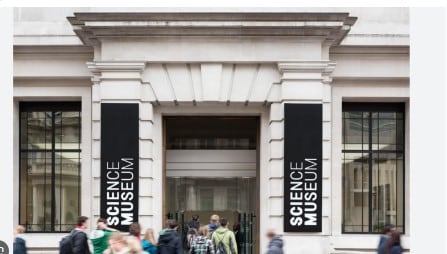British museums renovate to survive

At the beginning of the year, major British museums initiated a staff reduction program. This should not be seen merely as an immediate response to the post-pandemic crisis, but could also be interpreted as part of a long-term strategy for a new museum model. The goal is to build an increasingly sustainable economic model, capable of continuing to generate its own resources and leveraging a younger audience, expanding opportunities for engagement and future growth. This process, despite challenges and resistance, could shape the future of museum culture, even on an international scale. Tate, the Science Museum Group, and the Royal Academy are among the major British cultural institutions that have implemented staff reduction plans to address the financial difficulties resulting from the pandemic.
The Tate , marking its twenty-fifth anniversary, began reducing staff costs by 7% last March, specifying that this "rationalization" was achieved primarily through voluntary measures, such as not filling vacant roles and accepting voluntary resignations. Translated numerically, these cuts would have resulted in the elimination of approximately 40 positions. The need to address the future with a more contained cost structure is reflected in the economic and financial forecasts for future budgets starting with the 2023-24 management period, during which the Tate continued to experience a reduction in visitor numbers compared to pre-pandemic levels, particularly among international visitors, due to the rising cost of living. Overall visitor numbers increased from 5.99 million in 2022-23 to 6.36 million in 2023-24, taking into account the closure of Tate Liverpool and the opening of temporary spaces at the RIBA from October 2023. Thanks to the success of exhibitions on Hilma af Klimt, Piet Mondrian , and Philip Guston , Tate Modern has recovered from the coronavirus pandemic, reaching an audience of 82% of the pre-COVID average. The success of Tate Britain's program and the reorganization of its exhibition collection have increased attendance from 62% of the pre-COVID average to 79%. Visits to St Ives have consistently been around 90% of pre-2020 levels, and this trend has continued this year, demonstrating the gallery's enduring appeal. All this alarm about future prospects isn't immediately apparent in the 2023-24 financial results, which saw an improvement in admission and fundraising revenue, as well as maintaining membership revenue of £15.2 million. Furthermore, the 2023-24 management was supported by an exceptional refund of tax rates paid from 2017-18 to 2022-23, amounting to £6.2 million for three museum properties.
But looking ahead to the financial year, which ended last March (2024-25 management, but data is not yet available), the budget assumptions showed a deficit despite the use of unrestricted general reserves generated in 2021-22 and 2022-23. For this reason, a program was launched, starting with visitor analysis, aimed at "defining the directions for the period 2024-2030, summarized in a five-year plan called Tate Future: 2030." Over the years—as stated in the financial report—much has been done to improve the revenue streams that will ensure long-term sustainability: exhibition performance, memberships, and the creation of long-term resources for the future. A key aspect of this project is membership. There are currently around 145,000 members, and the launch of the Tate Collective youth program in April 2023 has seen its membership grow from 2,000 to over 180,000, attracted by the benefits of £5 tickets, discounts in shops and bars, exclusive events, and more. The appeal of these offers has continued throughout the coronavirus pandemic and has endured during the subsequent economic downturn.

Science Museum Group, London
The Science Museum Group (SMG) has also reduced its workforce, with approximately 20 employees leaving the organization following a transformation program that included team planning and vacancy management. The reduction in staff was necessary to address budget constraints in a challenging financial environment, which has resulted in a reduction in the staff budget of approximately £3 million over the past 18 months.

Royal Academy of Arts, London
The Royal Academy faces the same fate, potentially facing a staff reduction of up to 60 positions, with management admitting they face a "serious financial challenge" after visitor numbers have failed to return to pre-pandemic levels. This is primarily due to the significant decline in visitor numbers since the start of the pandemic, which has impacted the institution's revenue. Although the Royal Academy Council has approved the staff reduction plan, no final decision has yet been made. The situation has led some staff members to vote a motion of no confidence in the RA's management.
ilsole24ore




